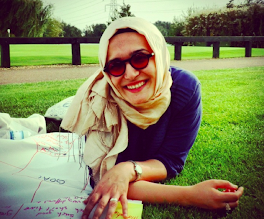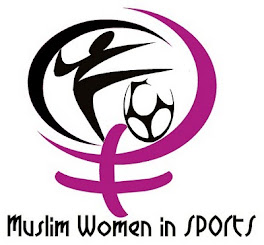Much has been made of the participation of the first Saudi woman in Olympics, with discussions on the headscarf and its compatibility with international sport. While it is an important debate, the media has completely glossed over the participation of many other Muslim women in London 2012. Sertaç Sehlikoglu argues that this is because non-stereotypical images of Muslim women puzzle the male colonial gaze. In this post, she aims to propound a more comprehensive understanding of the debates on Muslim sportswomen.
Recently at BBC World, I was part of a discussion around the ways in which women are sexualised in media coverage of Olympics. In that particular radio programme, two young feminist debaters were criticising how media pay less attention to women’s events except when the women participants look hyper-feminine or ‘pretty’ according to Western standards. I realised that the same media was paying more attention to (veiled/hijabi) Muslim female athletes than Muslim male athletes which is another face of the very same masculine perspective: sexualising Muslim women.
As a researcher and blogger on Muslim women’s involvement in sports, I have noticed a high demand of and interest in hijabi Muslim sportswomen’s participation in Olympics. Some media coverage has focussed on the fact that Saudi Arabia has sent women to Olympics for the first time in its history (together with Brunei and Qatar, both of which are less highlighted in these news), while some others are discussing the conditions under which hijabi Olympians should participate in the games.
In this media coverage, whether on TV, radio or on paper, there is emphasised focus on veiled images of Muslim women which can be seen as another way of sexualising women, though through veiling in this case. According to many feminist scholars in subaltern studies, a continuous focus on veiling is an extension of male-oriented colonial perspectives (Harper 1985, Hoodfar 1992, Kabbani 1986, Alloula 1986, Yeğenoğlu 1998). Indeed, very little or no attention is paid to any image that may puzzle the colonial perspective such as the fact that a Muslim country (Turkey) sent more female athletes than male ones to London 2012.
In order not to fall into the mentioned trap and develop a more comprehensive understanding in relation to the debates on Muslim sportswomen, I would like to suggest that we can group Muslim female Olympians into three categories, based on their outfits.
The first group of women is composed of those who are not following the Islamic dress code, some of whom do not believe that such dress code (that is, headscarf) is Islamic. Historically, this group has been involved in international games for much longer than the other two, since modernists in many Muslim societies viewed sports as a means of breaking women’s segregation and including them in public life in the early 20th century. The first Muslim women attended the 1936 Berlin Olympics: Suat Aşeni and Halet Çambel represented Turkey in fencing; 36 years after first women were allowed to compete in the Olympic Games. Turkey, as a country which accepts international dress regulations for different branches of sports, does not have any problem in sending its successful sportswomen to the Olympic Games and the sportswomen follow the international dress codes in sports. Thus, Turkey’s outfit regulations are designed to include women in professional sports, although this might end up excluding those with Islamic outfit concerns.
The second group of Muslim women is composed of those who believe in modesty and prefer observing Islam in terms of the dress code. These women often face dress restrictions, such as those in international games, which forbid wearing of headscarves based on safety and security concerns. Muslim sports activists propose ‘safe hijabs’ to negotiate with these concerns and suggest alternative styles for different branches. FIFA, for instance, had to get into contact with several designers for an approvable headgear to be used in international soccer games and decided on one developed by a Montrealer designer. In some cases, such as in the case of Ibtinaj Mohammad from USA, hijabi women interested in professional sports choose branches that will not jeopardise their Islamic dress concerns, as she did by focusing on fencing.
A third group of Muslim women however, are not allowed to participate in sports, not because of their religious choices or international game regulations, but because of the regulations of their own countries. Iranian sportswomen are an example since the branches of sports Iranian women are allowed to participate in are limited: Lida Fariman, Manije Kazemi (archery), Marjan Kalhor (skiing), and Sara Khoshjamal Fekri (taekwondo) are four Muslim women who have represented Iran in the Olympic Games in earlier years in accordance with dress regulations enforced by their country. In these cases, the dress codes of the sport are in line with Iran’s national dress code for modesty to be preserved. Similarly there are countries, such as Brunei, Saudi Arabia and Qatar, which have not sent a single woman to the Olympic Games until this year. Such outfit regulations influence female citizens of these countries whether the sportswomen themselves are Muslims or not, since they are bound with the codes both at national and international level.
There has been a lot of focus on the Saudi judo athlete who created history by becoming the first Saudi woman to participate in the Olympics. Of course, her participation is a big leap towards participation of Saudi women in sports but at the same time, her case should not be seen as typifying Muslim sportswomen. We need to recognise the plurality of Muslim sportswomen, instead of stereotyping and sexualising them.
Sertaç Sehlikoglu has recently completed her field research in Istanbul, Turkey on self-formation and subjectivation of sporting Muslim women for her PhD in Social Anthropology at the University of Cambridge. Her academic interests are leisure, daily politics, body, agency, subject formation and feminine normativity. Sehlikoglu is an active user of new media tools and owner of the blogwww.muslimwomeninsports.blogspot.com.




